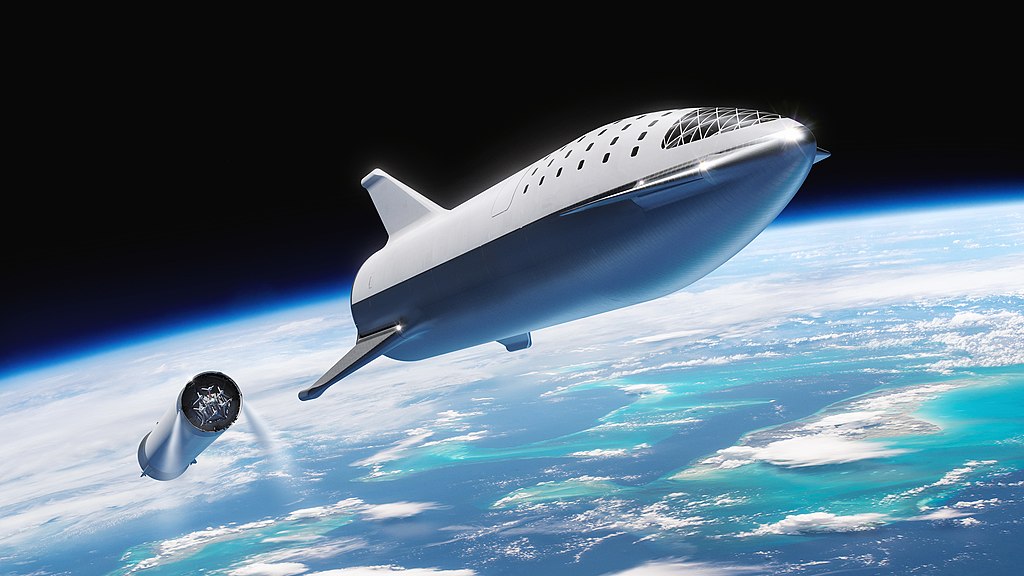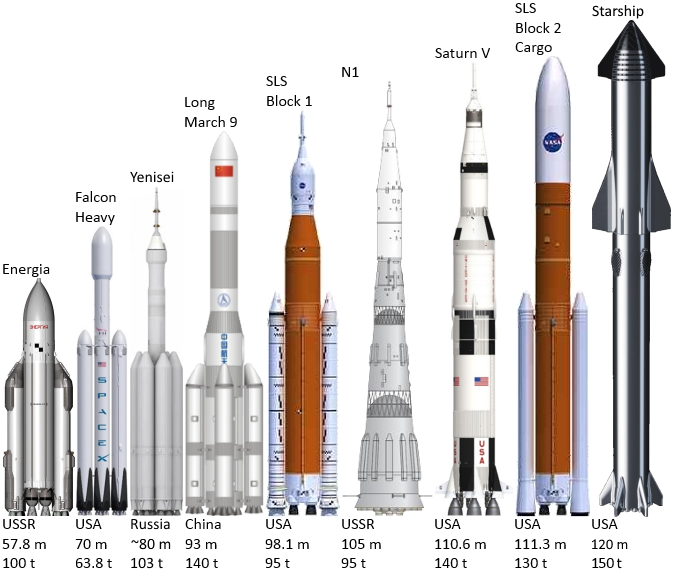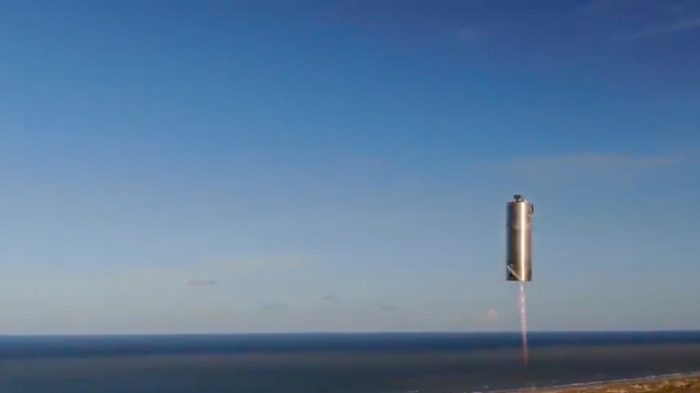On Tuesday, August 4, Space X 'hopped' into the future. What are we talking about?
This is when the Elon Musk-owned company performed its latest test of a prototype rocket designed for its Starship vehicle. The rocket performed what is being called a 'hop'. It shot up about 150m (500 feet) into the air, hovered for a bit, and then landed safely down upon the surface. Here's a video of the test.
Now maybe you look at that and think, hey, no big deal! And we can see why you might think that. After all, it doesn't look like that much. But in the world of space travel, this is a big deal.
The future of flight

An artist's version of the Starship—a new era spacecraft designed to go to Mars. (Space X/Wikimedia Commons)
For a while now, Space X has been testing a wide variety of new space vehicles. These have included everything from reusable rockets to capsules designed to take crew and cargo to the International Space Station (ISS) and beyond. And speaking of beyond, maybe their most intriguing vehicle has been Starship.
This spacecraft is still being designed, step by step. But when finished, Musk and Space X say it will be able to take a human crew all the way to Mars. It is also designed to be fully reusable, a major breakthrough that has become the calling card of Space X tech. It will even land on its surface, which is where the hop test comes in.
Happy (and safe) landings

Comparing the likely size of Starship (with its booster rocket, Super Heavy) alongside other space rockets—past, present, and future. Saturn V helped send Apollo astronauts to the Moon. (Wikimedia Commons)
The August 4 test wasn't so much about the craft's ability to launch successfully as much as land. Up until recently, used spacecraft generally did one of three things:
- Spun off into space as junk (booster rockets)
- Splashed down into the ocean using parachutes (space capsules)
- Landed on a runway like an airplane (the Space Shuttle)
Two of these things allowed humans to reach the surface. But neither capsules nor the Space Shuttle allowed for a relaunch—making them useless when trying to get back home from a place like Mars.
You might remember that the Moon lander did allow for a landing and takeoff. But the Moon has only weak gravity. And the astronauts didn't need to bring much cargo either—their visit to the Moon was more of an overnight trip. A human mission to Mars would last at least two years altogether, require many more supplies, and will need to deal with the pull of stronger gravity.
In other words, a larger, more powerful spacecraft needs to be built.
One giant hop for humankind
This is the need that Space X is aiming to fill with the Starship.
The final vehicle will be about Space Shuttle-sized—50 metres (160 ft) long and 9 m (30 ft) wide. With its booster rocket—the Super Heavy—attached, it will be immense, measuring 122 metres (400 ft) long and weighing about 150 tons. That's longer than a football field and twice as heavy as a blue whale!
But again, the key will be that Starship will be able to land upright on the surface of both Earth and Mars. This ability, along with its size and power, would make it the best round-trip spacecraft that we've ever built.
Will Space X's Starship make the leap from dreams to reality? That remains to be seen. But if it does, this test will prove that every successful leap begins with a hop.
 Space X only used this 'silo' version of the rocket because weight was the only thing that mattered—it didn't need to be aerodynamic enough to fly fast and far. (YouTube/Space X)
Space X only used this 'silo' version of the rocket because weight was the only thing that mattered—it didn't need to be aerodynamic enough to fly fast and far. (YouTube/Space X)









